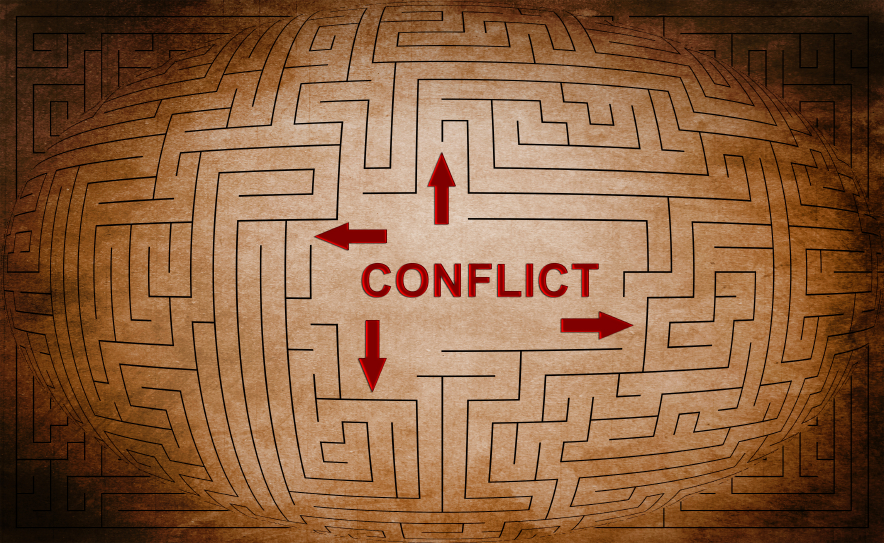According to CrisMarie Campbell and Susan Clarke—cofounders of thrive! Inc.—there is a certain beauty in conflict. In a recent interview, Campbell and Clarke say, “Conflict can be beautiful. No, it’s not easy or fun, but the magic of a team is that people are better together. The catch is that the ‘better’ part can only happen when you are willing to risk saying something that is true for you while staying curious about its impact on the other person.”
Conflict is a natural, if not uncomfortable, part of any workplace. It’s rare to find an organization in which conflict does not exist. This means that rather than trying to avoid conflict altogether, organizations should seek to understand the sources of the conflict to help address them as quickly and painlessly as possible.
5 Primary Sources of Conflict
To that end, in this post, we’ll talk about the five primary sources of workplace conflict.
- Interdependence conflict. Interdependence conflict occurs when one person’s work depends on that of another. For example, a customer service team might be frustrated with consistently poor quality coming from the manufacturing group. Understanding internal customer service principles—which we’ve written about previously—can help alleviate this type of conflict.
- Style differences. Some people simply have different work styles. Some like to meticulously plan and get the bulk of the work done up front, while others tend to procrastinate. Some staff prefer group work, while others prefer individual work.
- Leadership differences. Similarly, different leaders have different styles, as well. An example of this is micromanaging versus taking a hands-off approach. Either can rub staff and fellow managers the wrong way. It’s important to help employees and managers understand that there is more than one way to accomplish a task and to be flexible and understanding when working with coworkers and managers who may have different work styles.
- Personality clashes. Sometimes, two people in the office simply don’t like each other. They wouldn’t be friends outside of the office, and they can barely stand each other at work. The key to managing personality clashes is to insist on professionalism and a focus on the job at hand rather than on coworkers’ personalities. If everyone behaves professionally and focuses on the job, personality clashes can be kept in check.
- Differences in background. This last example isn’t really a justifiable source of conflict, but it’s important to note, as it does exist. Some conflicts emerge as a result of differences in employee backgrounds—whether gender, race, sexual orientation, etc. These simply have no place in a modern workplace and can be addressed through sensitivity or cultural training.
Conflict is going to happen in any workplace. Rather than burying your head in the sand, seek to understand the source of the conflict to quickly address and resolve it.
While conflicts can be frustrating and uncomfortable, they aren’t always necessarily completely negative. Rather, conflict can be a valuable source of collaboration and problem solving.
“That’s because each party brings a different agenda to the table based on their function,” says Jeane Sahadi in an article for CNN. “The head of operations may see things differently than the head of sales, who may see things differently than the head of finance. The goal with any disagreement is to figure out if you can solve for both of your concerns, and map out the implications of any proposed move for all sides.”
When Agendas Are Different
Sahadi’s comments focus on differences in agendas, which is essentially a form of interdependence conflict. When the finance team has a different agenda than the operations team, the finance team is unlikely to be fully committed to supporting the operations-focused needs of the operations group.
Taking an Organizational Focus
So how can conflict be beneficial if it seems like one group may need to forego its primary interest for the benefit of the other? This is a bit of a misleading question because the goal of these groups shouldn’t be to look out for the best interests of their department.
It should be to look out for the best interests of the organization as a whole. While there may not be a course of action that is the best option for operations and the best option for finance, there is more likely to be a path forward that is the best option for the organization as a whole.
The benefit of the interdepartmental conflict is that it addresses the needs and concerns of each individual department with the goal of doing what’s best for the broader organization.
Conflict can often emerge because different departments have different agendas. Bringing that conflict to the surface and working collaboratively to resolve it can be an effective way to get groups out of their silos and think about the best interests of the broader organization.
